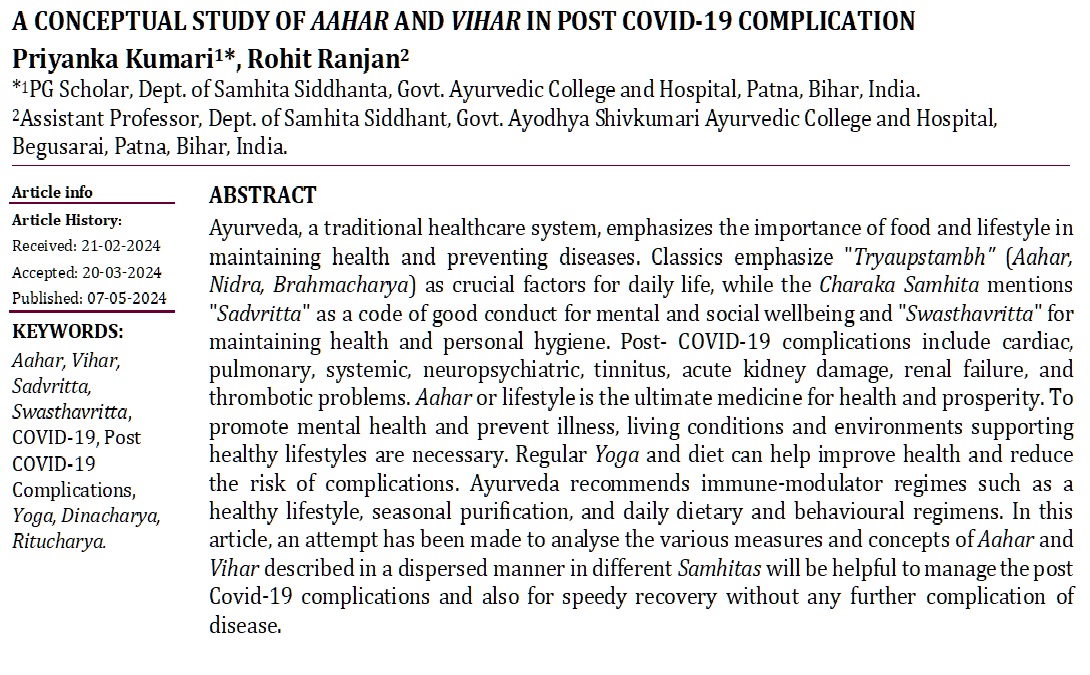A Conceptual Study of Aahar and Vihar in Post Covid-19 Complication
DOI:
https://doi.org/10.47070/ayushdhara.v11i2.1504Keywords:
Aahar, Vihar, Sadvritta, Swasthavritta, COVID-19, Post COVID-19 Complications, Yoga, Dinacharya, Ritucharya.Abstract
Ayurveda, a traditional healthcare system, emphasizes the importance of food and lifestyle in maintaining health and preventing diseases. Classics emphasize "Tryaupstambh" (Aahar, Nidra, Brahmacharya) as crucial factors for daily life, while the Charaka Samhita mentions "Sadvritta" as a code of good conduct for mental and social wellbeing and "Swasthavritta" for maintaining health and personal hygiene. Post- COVID-19 complications include cardiac, pulmonary, systemic, neuropsychiatric, tinnitus, acute kidney damage, renal failure, and thrombotic problems. Aahar or lifestyle is the ultimate medicine for health and prosperity. To promote mental health and prevent illness, living conditions and environments supporting healthy lifestyles are necessary. Regular Yoga and diet can help improve health and reduce the risk of complications. Ayurveda recommends immune-modulator regimes such as a healthy lifestyle, seasonal purification, and daily dietary and behavioural regimens. In this article, an attempt has been made to analyse the various measures and concepts of Aahar and Vihar described in a dispersed manner in different Samhitas will be helpful to manage the post Covid-19 complications and also for speedy recovery without any further complication of disease.
Downloads

Downloads
Published
Issue
Section
License
Copyright (c) 2024 AYUSHDHARA

This work is licensed under a Creative Commons Attribution-NonCommercial-ShareAlike 4.0 International License.


